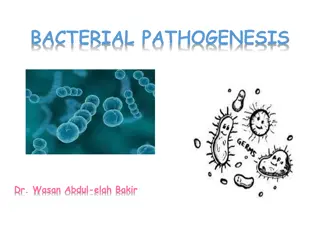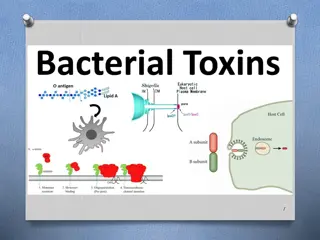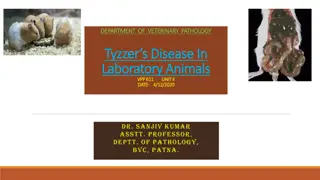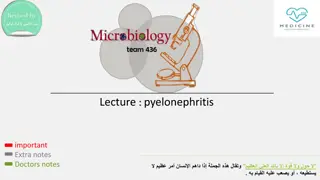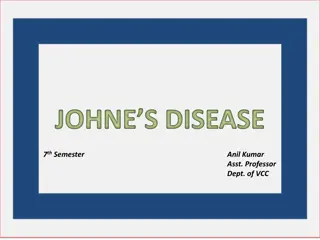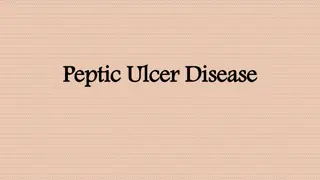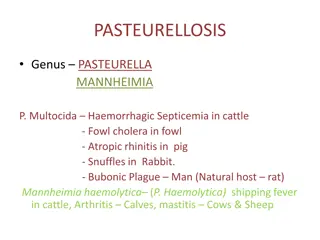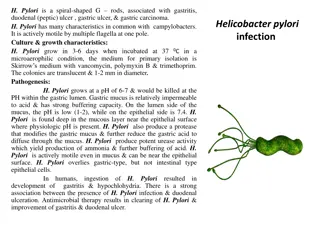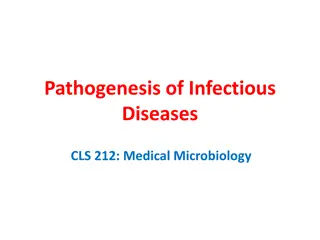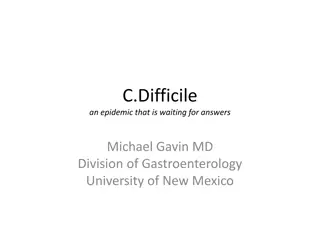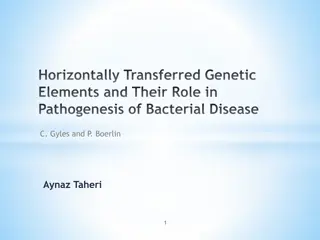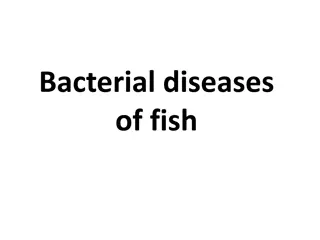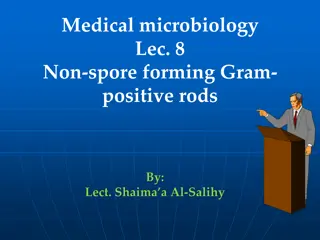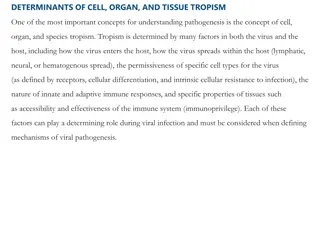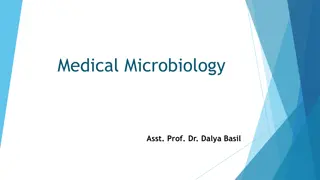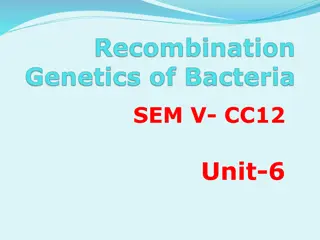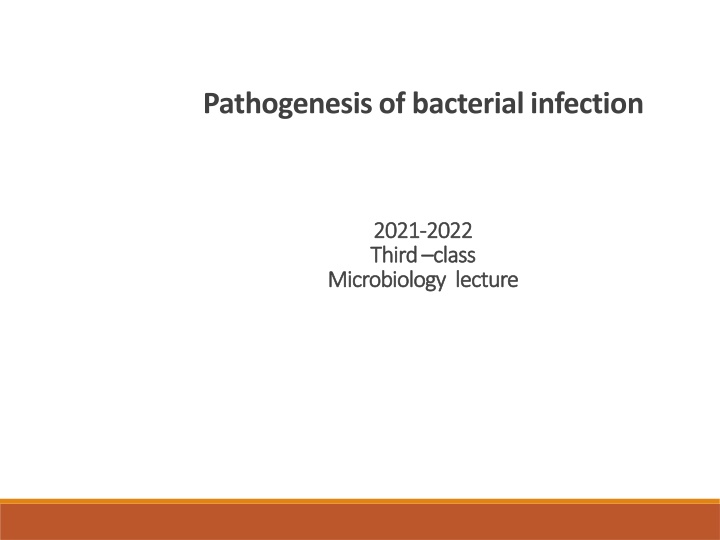
Bacterial Infection Pathogenesis: Mechanisms and Factors
Learn about the pathogenesis of bacterial infections, including initiation, transmission, adherence, invasion, toxigenicity, and evasion of host immune response. Explore the role of virulence factors in colonization, immune evasion, immunosuppression, and intracellular survival.
Download Presentation

Please find below an Image/Link to download the presentation.
The content on the website is provided AS IS for your information and personal use only. It may not be sold, licensed, or shared on other websites without obtaining consent from the author. If you encounter any issues during the download, it is possible that the publisher has removed the file from their server.
You are allowed to download the files provided on this website for personal or commercial use, subject to the condition that they are used lawfully. All files are the property of their respective owners.
The content on the website is provided AS IS for your information and personal use only. It may not be sold, licensed, or shared on other websites without obtaining consent from the author.
E N D
Presentation Transcript
Pathogenesis of bacterial infection 2021 2021- -2022 Third Third class Microbiology lecture Microbiology lecture 2022 class
Pathogenesis of bacterial infection Pathogenesis of bacterial infection The pathogenesis of bacterial infection includes initiation of the infectious process and the mechanisms that lead to the development of signs and symptoms of disease. Characteristics of bacteria transmissibility, adherence to host cell, invasion of the host cell & tissues, toxigenicity, and ability to evade the host immune response. Adherence (adhesion, attachment): The process by which bacteria stick to the surface of host cell. It is the major initial step in the infection process. Carrier: A person or animal with asymptomatic infection that can be transmitted to another susceptible person or animal. Invasion: The process whereby bacteria, parasites, fungi, and viruses enter host cell or tissues & spread in the body. that are pathogens include
Pathogenesis of bacterial infection Pathogenesis of bacterial infection
Pathogenesis of bacterial infection Pathogenesis of bacterial infection Infection: Multiplication of an infectious agent within the body. Multiplication of the normal flora in or on the body generally not considered an infection. Multiplication of pathogenic bacteria even if the person is asymptomatic is consider an infection. Nonpathogenic: A microorganism that does not cause disease (may be part of normal flora). Opportunistic pathogen: An agent capable of causing disease only when the host resistance is impaired e.g. (immunocompromised patients, pregnant woman).
Pathogen: A microorganism capable of causing disease. Pathogenicity: The ability of an infectious agent to cause disease. Toxigenicity: The ability of microorganism to produce toxin that contribute to the development of disease. Virulence: The quantitative ability of an agent to cause disease. It involves adherence, invasion, and toxigenicity.
Bacterial virulence factors Bacterial virulence factors Virulence factors: are molecules expressed and secreted by pathogens (bacteria, viruses, fungi and protozoa) that enable them to achieve the following: 1. colonization (this includes adhesion to cells) 2. Immunoenvasion, evasion of the host's immune response 3. Immunosuppression, inhibition of the host's immune response 4. entry into and out of cells (if the pathogen is an intracellular one) 5. obtain nutrition from the host.
Bacterial virulence factors Bacterial virulence factors Virulence factors are very often responsible for causing disease in the host as they inhibit certain host functions. Pathogens possess a wide array of virulence factors. Some are intrinsic to the bacteria (e.g. capsules and endotoxin) whereas others are obtained from plasmids (e.g. some toxins). A major group of virulence factors are bacterial toxins. These are divided into two groups: endotoxins and exotoxins.
Bacterial virulence factors Bacterial virulence factors Exotoxins are actively secreted by some bacteria and have a wide range of affects including inhibition of certain biochemical pathways in the host. The two most potent exotoxins known to man are the tetanus toxin (tetanospasmin) secreted by Clostridium tetani and the botulinum toxin secreted by Clostridium botulinum. Exotoxins are also produced by a range of other bacteria including Escherichia coli; Vibrio cholerae (causative agent of cholera); Clostridium perfringens (causative agent of food poisoning as well as gas gangrene) and Clostridium difficile (causative agent of pseudomembranous colitis).
Bacterial virulence factors Bacterial virulence factors Some bacteria, such as Streptococcus pyogenes, Staphylococcus aureus and Pseudomonas aeruginosa, produce a variety of enzymes which cause damage to host tissues. Enzymes include hyaluronidase, which breaks down the connective tissue component hyaluronic acid ; a range of proteases and lipases ; DNAses, which break down DNA, and hemolysins which break down a variety of host cells, including red blood cells. Capsules, made of carbohydrate, form part of the outer structure of many bacterial cells including Klebsiella & B. anthracis, St. pneumonia. Capsules play important roles in immune evasion, as they inhibit phagocytosis, as well as protecting the bacteria while outside a host.
Transmission An understanding of the mode of transmission of bacteria and other infectious agents is extremely important from a public health perspective, because interrupting the chain of transmission is an excellent way to prevent infectious diseases. Modes of transmission. 1.Human to human : A. Direct contact Gonorrhea : e.g., sexual, or passage through birth canal. B. No direct contact (Dysentery) Fecal oral: e.g., excreted in human feces, then ingested in food or water. C. Trans placental :Congenital syphilis Bacteria cross the placenta and infect the fetus. D. Blood-borne Syphilis Transfused blood or intravenous drug use can transmit. 2. Nonhuman to human 1. Soil source :Tetanus Spores in soil enter wound in skin. 2. Water source :Legionnaire's disease Bacteria in water aerosol are inhaled into lungs. 3. Animal source: A. Directly Cat-scratch fever Bacteria enter in cat scratch B. Via insect vector: Lyme disease Bacteria enter in tick bite.
vertical transmission vertical transmission. vertical transmission. The three modes by which organisms are transmitted vertically are across the placenta, within the birth canal during birth, and via breast milk. Horizontal transmission, by contrast, is person-to-person transmission that is not from mother to fetus 1. Respiratory tract: Streptococcus pneumonia(Pneumonia). Neisseria meningitides (Meningitis). Haemophilus influenza (Meningitis). Mycobacterium tuberculosis (Tuberculosis). 2. Gastrointestinal tract: Shigella dysenteriae (Dysentery). Salmonella typhi (Typhoid fever). Vibrio cholera (Cholera).
3. Skin: Clostridium tetani (Tetanus). Rikettsia rickettsia(Rocky Mountain spotted fever). 4. Genital tract: Neisseria gonorrhoeae (Gonorrhea). Treponema pallidum (Syphilis). Chlamydia trachomatis(Urethritis)
GRAM-POSITIVE BACTERIA The exotoxins produced by gram-positive bacteria have several different mechanism of action and produce different clinical effect 1. Diphtheria toxin, produced by Corynebacterium diphtheriae 2. Tetanus toxin, produced by Clostridium tetani, is a neurotoxine 3. Botulinum toxin, produced by Clostridium botulinum,is a neurotoxin 4. Two exotoxins are produced by Clostridium difficile, both of which are involved in the pathogenesis of pseudomembranous colitis. Exotoxin A is an enterotoxin that causes watery diarrhea . .
GRAM-POSITIVE BACTERIA 5. Multiple toxins are produced by Clostridium perfringens and other species of clostridia that cause gas gangrene. The best characterized is the alpha toxin, which is a lecithinase that hydrolyzes lecithin in the cell membrane, 6. Three exotoxins are produced by Bacillus anthracis, the agent of anthrax: edema factor, lethal factor, and protective antigen. 8. Staphylococcal enterotoxin is also a superantigen but, because it is ingested, acts locally on the lymphoid cells lining the small intestine. 9. Exfoliatin is a protease produced by S. aureus that causes scalded skin syndrome.
GRAM-NEGATIVE BACTERIA The exotoxins produced by gram-negative bacteria also have several different :mechanisms of action and produce different clinical effects 1. The heat-labile enterotoxin produced by E. coli causes watery, nonbloody diarrhea by stimulating adenylate cyclase activity in cells in the small intestine. 2. Verotoxin is an exotoxin produced by strains of E. coli 3. The enterotoxins produced by V. cholerae, the agent of cholera and Bacillus cereus, a cause of diarrhea, act in a manner similar to that of the heat-labile toxin of E. coli. 4. Pertussis toxin, produced by Bordetella pertussis, the cause of whooping cough, is an exotoxin .

